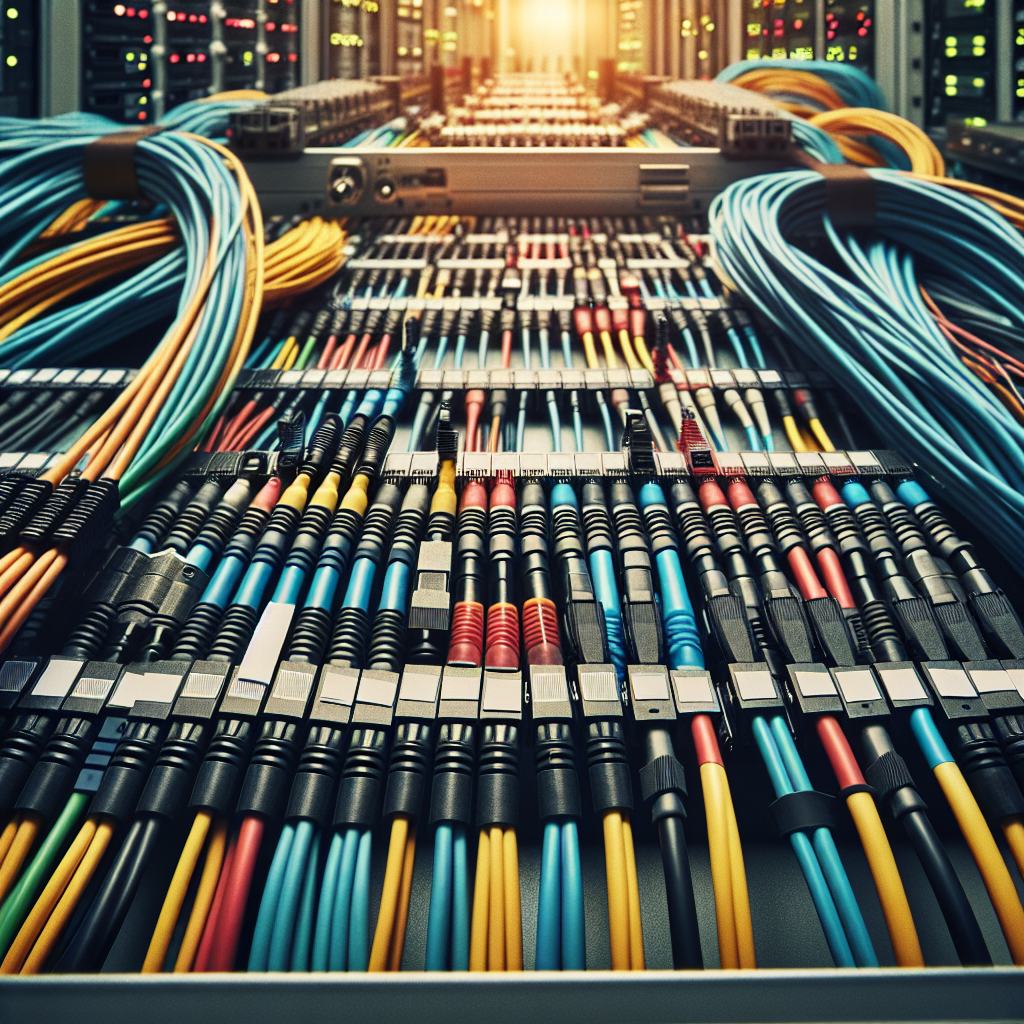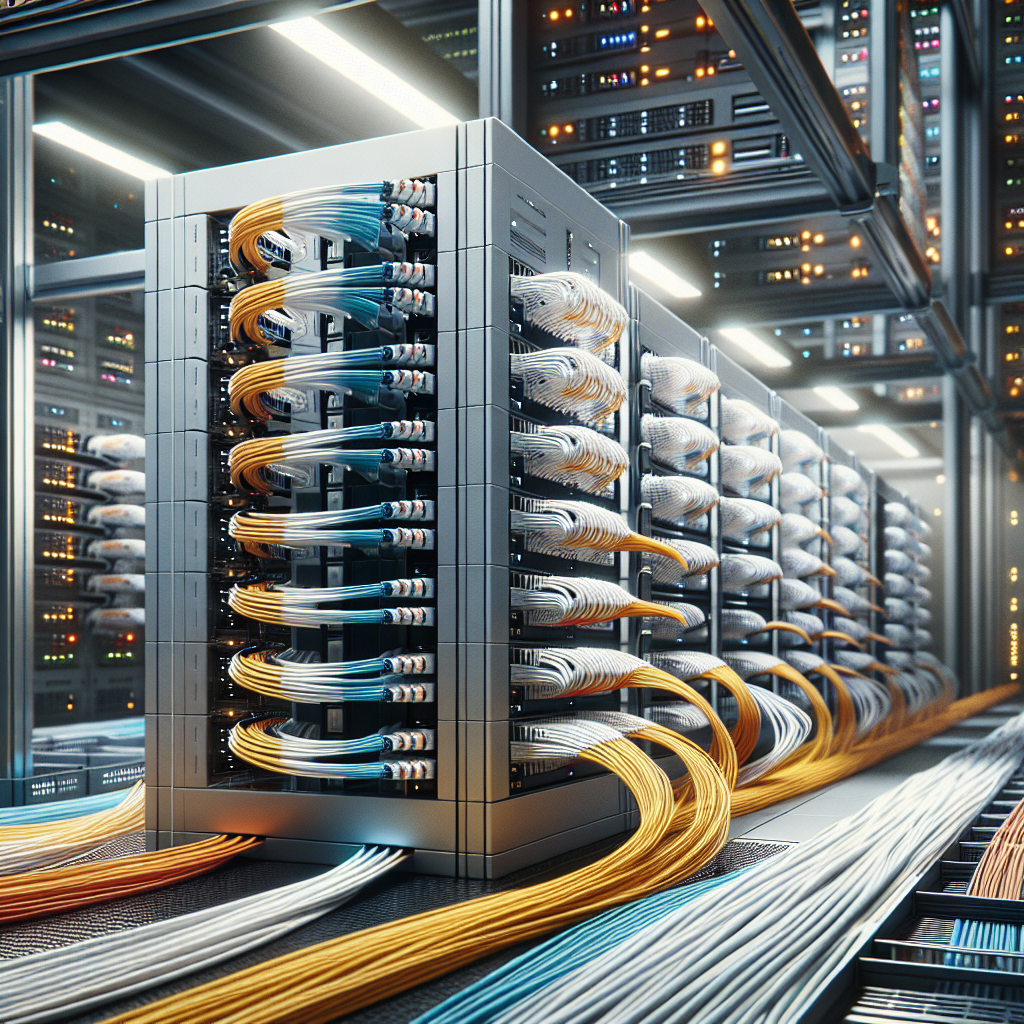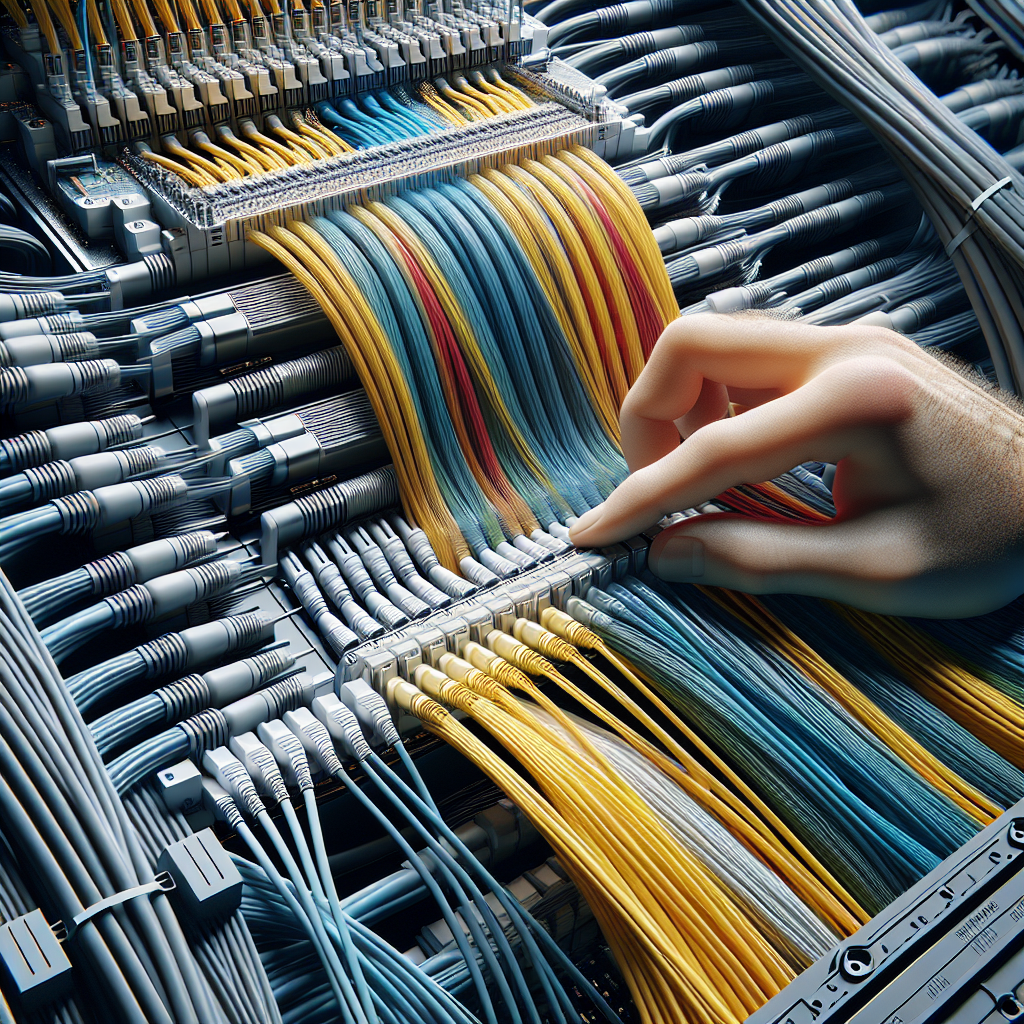In today’s world of rapidly advancing technology, fiber optic cable management is more crucial than ever. Proper management ensures that your network infrastructure remains efficient, reliable, and capable of handling the increasing demand for high-speed data transfer. Fiber optic cables are the backbone of modern communication systems, and neglecting their management can lead to numerous issues, including data loss, reduced performance, and increased maintenance costs.
Effective fiber optic cable management involves a range of practices designed to keep cables organized, protected, and easily accessible. From strategic planning and installation to regular maintenance and upgrades, every step of the process plays a vital role in ensuring the longevity and performance of your network.
At Rapid Voice Data Solutions, we understand the complexities involved in managing fiber optic cables. Our team of experts is dedicated to providing you with the best infrastructure wiring and equipment installation services that you deserve. We work tirelessly to deliver a comprehensive plan of action that meets your goals and keeps your network running smoothly.
Visit our website to learn more and get started today! Click here.
Importance of Proper Cable Management

Proper cable management is not just a matter of aesthetics; it is a critical aspect of maintaining the integrity and performance of your network infrastructure. Effective fiber optic cable management helps prevent numerous issues that can compromise the efficiency and reliability of your network.
Firstly, proper cable management minimizes the risk of physical damage. Fiber optic cables are delicate and can be easily damaged if not handled and organized correctly. By keeping cables neatly arranged and secured, you reduce the chances of kinks, bends, and breaks that can lead to data transmission errors and costly repairs.
Secondly, organized cables enhance airflow within network environments. Poor cable management can obstruct airflow, leading to overheating of equipment and potential system failures. By ensuring that cables are properly routed and secured, you allow for better cooling and maintain optimal operating conditions for your hardware.
Additionally, well-managed cables make maintenance and troubleshooting more straightforward. When cables are labeled and systematically arranged, technicians can quickly identify and resolve issues, minimizing downtime and ensuring that your network remains operational.
Lastly, proper cable management can improve the overall lifespan of your network infrastructure. By reducing wear and tear on cables and equipment, you prolong their usability and reduce the need for frequent replacements and upgrades.
In summary, investing in proper cable management practices is essential for maintaining a high-performing, reliable, and efficient network infrastructure. It not only protects your investment but also ensures that your network can meet the demands of today’s data-driven world.
Planning Your Cable Management Strategy

Planning a robust cable management strategy is a pivotal step in ensuring the longevity and efficiency of your fiber optic network. A well-thought-out strategy not only simplifies installation but also supports future scalability and maintenance.
The first step in planning your cable management strategy is to assess your current and future needs. Consider the types of equipment you are using, the amount of data traffic, and potential growth. This will help you determine the capacity and type of cabling infrastructure required.
Next, create a detailed layout of your network environment. Identify the locations of servers, switches, routers, and other critical components. Mapping out this layout helps in planning the most efficient cable routes and identifying potential obstacles.
Choosing the right cable management products is another essential aspect. Invest in high-quality cable trays, racks, conduits, and labeling systems. These products help in organizing cables systematically and ensure that they are easily accessible for maintenance and troubleshooting.
Implementing color coding and labeling is also vital. Use different colors for various types of cables, such as data, power, and control cables. Clearly label each cable to indicate its purpose and destination. This practice significantly reduces confusion during maintenance and upgrades.
Additionally, consider the future scalability of your network. Design your cable management system to accommodate future expansions without requiring a complete overhaul. This forward-thinking approach saves time and resources in the long run.
Finally, establish and document standard operating procedures (SOPs) for cable management. These SOPs should include guidelines for cable routing, securing, and labeling. Training your team to follow these procedures ensures consistency and helps maintain the integrity of your cable management system.
By meticulously planning your cable management strategy, you create a foundation for a reliable and efficient network. This proactive approach not only simplifies current operations but also prepares your infrastructure for future advancements.
Best Practices for Cable Installation
Adhering to best practices for cable installation is essential for maintaining a reliable and high-performance fiber optic network. Proper installation techniques not only enhance the efficiency of the network but also minimize the risk of damage and signal loss.
One fundamental practice is to always follow the manufacturer’s guidelines for cable installation. Each type of fiber optic cable may have specific requirements for bend radius, pulling tension, and environmental conditions. Ignoring these guidelines can lead to cable damage and degraded performance.
Before starting the installation, ensure that all cables and connectors are clean and free from dust and debris. Contaminants can cause signal loss and damage connectors, leading to costly repairs and downtime. Use proper cleaning tools and techniques to maintain the integrity of the cables.
During installation, avoid sharp bends and excessive pulling forces. Fiber optic cables are sensitive to physical stress, and improper handling can lead to microbends and macrobends, which affect signal transmission. Use appropriate cable management tools such as bend radius guides and cable pullers to prevent damage.
Securing the cables adequately is another critical practice. Use cable ties, Velcro straps, or other non-abrasive fasteners to bundle and secure cables. However, avoid over-tightening as it can cause compression damage. Ensure that cables are supported along their entire length to prevent sagging and strain.
Implementing proper grounding and bonding techniques is also vital for safety and performance. Grounding helps in dissipating electrical surges and prevents damage to the network equipment. Follow industry standards and local codes for grounding and bonding to ensure compliance and safety.
Labeling and documentation are equally important. Clearly label each cable at both ends and maintain an up-to-date documentation of the cable routes, connections, and configurations. This practice simplifies troubleshooting and future upgrades.
Finally, conduct thorough testing and validation after installation. Use appropriate testing equipment to verify the integrity and performance of the cables. Document the test results and address any issues promptly to ensure optimal network performance.
By following these best practices for cable installation, you can significantly enhance the reliability and longevity of your fiber optic network. Proper installation not only ensures current operational efficiency but also lays the groundwork for future scalability and advancements.
Maintaining and Inspecting Fiber Optic Cables

Maintaining and inspecting fiber optic cables is crucial for ensuring the continuous optimal performance of your network. Regular maintenance and thorough inspections can prevent minor issues from escalating into major problems, saving both time and cost in the long run.
One key aspect of maintenance is routine cleaning. Dust, dirt, and other contaminants can accumulate on fiber optic connectors and cause signal degradation. Use appropriate cleaning solutions and tools, such as lint-free wipes and specialized cleaning pens, to keep connectors clean. **Regular cleaning** helps maintain the integrity of the signal and prevents unexpected downtimes.
Visual inspections are another critical component. Regularly inspect cables for signs of wear, such as cracks, bends, or kinks. **Physical damage** to the cables can severely impact performance. Inspecting the cable’s protective outer jacket is equally important to ensure it remains intact and effective in protecting the internal fibers.
In addition to visual inspections, use advanced tools like OTDR (Optical Time-Domain Reflectometer) to detect faults within the cables. An OTDR can pinpoint issues such as breaks, bends, and splice losses, providing a detailed overview of the cable’s condition. **Routine testing** with an OTDR or other diagnostic tools helps identify potential problems before they affect the network’s performance.
Another best practice is to monitor the environmental conditions where the cables are installed. Factors such as temperature, humidity, and physical stress can affect the longevity and performance of fiber optic cables. Install environmental monitoring systems to track these conditions and take corrective actions as needed.
Documenting maintenance activities and inspection results is also essential. Keep detailed records of all inspections, cleaning schedules, and test results. This documentation provides a valuable reference for future troubleshooting and helps in maintaining a proactive maintenance schedule.
Training your team on the latest maintenance techniques and industry standards is another critical step. Ensure that your personnel are well-versed in handling and maintaining fiber optic cables, as improper techniques can cause more harm than good. **Continuous education** ensures that your team can effectively manage and maintain the network.
By diligently maintaining and inspecting fiber optic cables, you can significantly enhance the reliability, performance, and longevity of your network infrastructure. Proper maintenance practices not only prevent issues but also extend the life of your investment, ensuring uninterrupted service and customer satisfaction.
Advanced Tools for Cable Management

In the realm of fiber optic cable management, leveraging advanced tools can make a significant difference in ensuring efficiency and accuracy. These tools are designed to streamline various tasks such as installation, maintenance, and troubleshooting, thereby enhancing the overall performance of your network.
One essential tool is the **Optical Time-Domain Reflectometer (OTDR)**. This device is invaluable for diagnosing issues within the fiber optic cables. It sends a series of optical pulses through the cable and measures the reflections to identify faults, such as breaks or bends, and to estimate the distance to these faults. This allows for precise pinpointing of issues without the need for extensive manual inspections.
Another crucial tool is the **Fusion Splicer**. This device is used to join two optical fibers end-to-end, ensuring minimal signal loss. Fusion splicers use an electric arc to melt the fibers together, creating a seamless connection. This tool is essential for both the installation of new cables and the repair of existing ones, providing reliable and high-quality splices.
**Cable Testers** are also important in fiber optic cable management. These devices verify the integrity and performance of the cable by measuring parameters such as attenuation, return loss, and bandwidth. Regular testing with these tools ensures that the cables meet industry standards and perform optimally.
**Fiber Optic Cleaning Kits** are indispensable for maintaining the cleanliness of connectors and splices. These kits typically include cleaning solutions, lint-free wipes, and specialized tools for removing contaminants. Keeping the connectors clean is essential for maintaining signal integrity and preventing performance degradation.
**Environmental Monitoring Systems** are useful for tracking the conditions where the fiber optic cables are installed. These systems monitor factors such as temperature, humidity, and physical stress, providing real-time data to help maintain optimal conditions for the cables. This proactive approach can prevent environmental factors from adversely affecting cable performance.
Lastly, **Cable Management Software** aids in organizing and documenting the entire network infrastructure. This software provides a centralized platform for managing cable layouts, maintenance schedules, and inspection records. It enhances collaboration among team members and ensures that all necessary information is readily accessible.
By incorporating these advanced tools into your fiber optic cable management practices, you can significantly improve the efficiency, reliability, and longevity of your network. These tools not only simplify complex tasks but also provide valuable insights that help in making informed decisions.
Visit our website to learn more and get started today! Click here.

